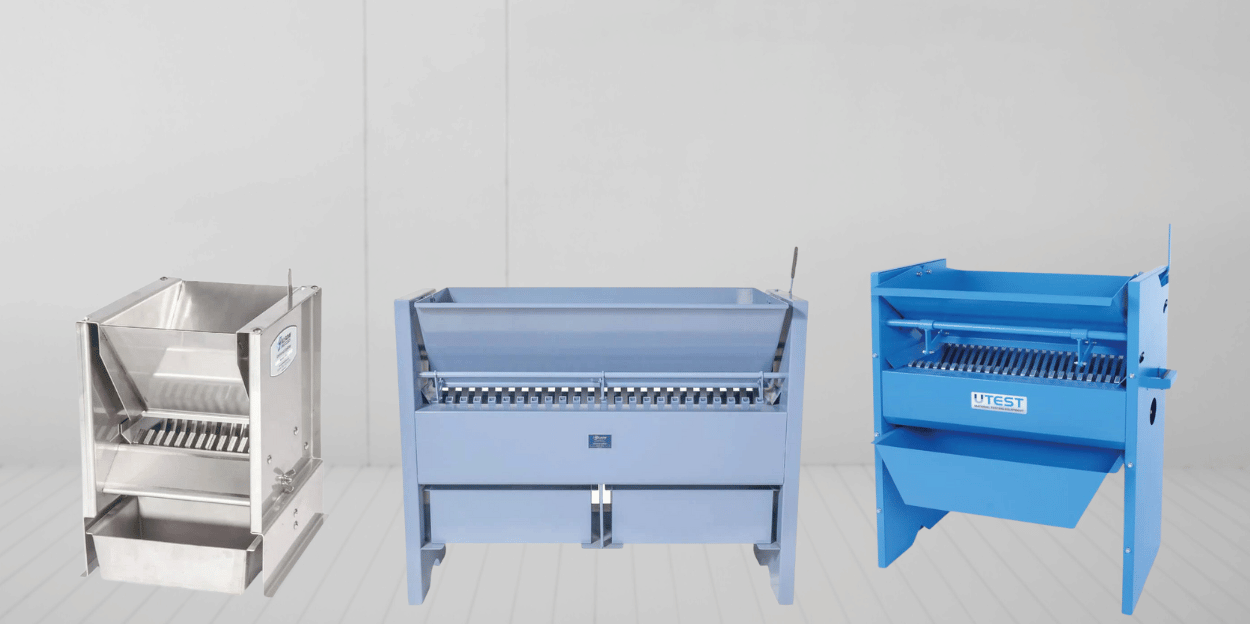No Products in the Cart

In this guide, we navigate the world of sample splitters. This important equipment in laboratories, ensure the precise extraction of representative samples from bulk materials. By minimizing variability and human error, sample splitters contribute to the reliability of laboratory results. We'll break down the important elements and provide the lowdown on features that not only make your process smoother but also make your testing experience better.
The first consideration in choosing a sample splitter is the material type. Dry, flowable materials are best suited for representative sampling using splitters. Particle size, shape, density, and moisture content should be carefully evaluated. Chute width, determined by the largest particle dimension, plays a crucial role in preventing issues like bridging, which can introduce errors into the samples.
Different test methods may specify particular splitting requirements, such as chute angles, hopper capacities, or the number of chutes. Understanding these specifications is vital in ensuring compliance with industry standards and achieving accurate results. Some industries may demand specific configurations to accommodate the characteristics of the materials being tested.
Efficiency in sample splitting is often associated with fewer splits. Assessing the size and capacity requirements of your samples is crucial. A balance should be maintained to avoid errors caused by insufficient capacity while also considering the available space in the test chamber. Estimating the fraction of the original sample needed for testing will help determine the optimal number of passes through the splitter.
Versatility is a key factor in selecting a sample splitter. Certain features can significantly enhance the efficiency of your sampling process. Consider:
Hoppers with Gate Release Feature: This minimizes human error by holding materials until they are evenly distributed into the available chutes.
Adjustable Chute Bars: Ideal for samples with varying particle sizes, these bars allow for changes in chute widths, saving both money and floor space.
Recommended Product: Large Capacity Sample Splitter or Gilson Universal Sample Splitters
Splitter Materials: For applications involving food-grade or reactive materials, it's crucial to choose equipment with low-contamination risk. Stainless steel contact surfaces are recommended.
Recommended Product: Gilson Universal Sample Splitters or Mini-Splitters.
Dust Control: Certain materials produce dust when handled, presenting potential health hazards. Splitters equipped with advanced dust control features are crucial. Please reach out to us to discuss your specific requirements.
Choosing the right equipment based on material characteristics, test specifications, size requirements, and essential features will not only improve the accuracy of your lab results but also enhance overall efficiency.
Measur is here to assist you and provide the necessary information and support for your materials testing needs. Have all your inquiries addressed promptly through the form below, telephone, or live chat.